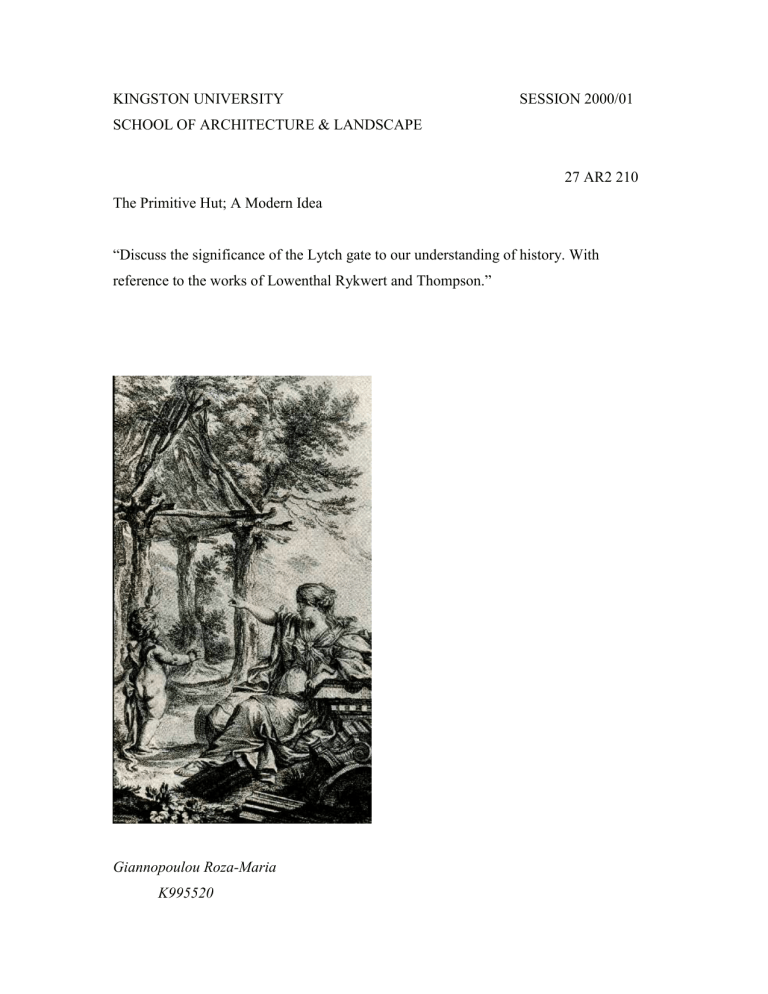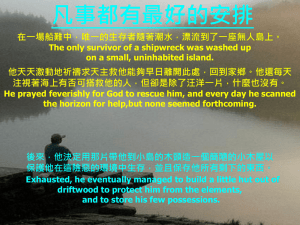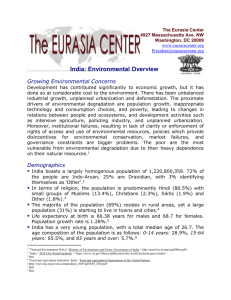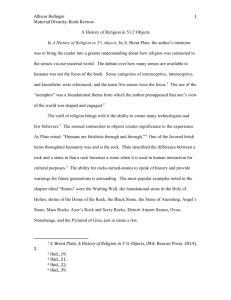the whole essay

KINGSTON UNIVERSITY
SCHOOL OF ARCHITECTURE & LANDSCAPE
The Primitive Hut; A Modern Idea
SESSION 2000/01
27 AR2 210
“Discuss the significance of the Lytch gate to our understanding of history. With reference to the works of Lowenthal Rykwert and Thompson.”
Giannopoulou Roza-Maria
K995520
Small construction from the past, projecting and introducing as to sophisticated structures and ideas. Lytch gate, unknown to most of the people, is a covered wooden gateway with open sides at the entrance to a churchyard, providing a resting-place for a coffin (the word lych is Saxon for corpse).
Part of the burial service is sometimes read there.
1
Its settlement between the cemetery and the living city is like a division between the two worlds of the known and the unknown. This idea of the shelter-threshold between two different words has been a multidimensional thought and has been expressed with various ways throughout our history:
The gates
of Paradise, The gates of Solomon, the triumphal Arch, the gate of Naxos, the
Sanctuary (in Christian religion), different examples in ancient Egypt, all serving a different purpose though shearing the same structure, where humanity been dwelling in between, “Man is situated in the world, and dwells between earth and sky. Man is part of a fourfold continuum of earth, sky, mortals and divinities”.
2
A Lytch gate is a conceptual representation of the building as well as, brings back issues about mortality, speculating series of primitive conditions.
3
The idea of the Lytch gate represents an image of the primitive hut at the future.
Near the beginning of the first Essai
, Laugier says “…man in his earliest origin, without any other help, without other guide than the natural instinct of his needs. He wants a place to settle.
4
The modern figure of the Primitive Hut is settled to a ‘society which dates its beginning from the very creation of the world, which sees itself as the direct product of the cosmic plan, is likely to believe that the way to achieve harmony with the
1 Fleming, J., Honour, H., Pevsner, N. (1999) Penguin dictionary of Architecture and Landscape
Architecture,
The Greek word for gate is ‘πύλη’ which has the same root with the word spring (=πηγή) both explaining the idea of something running through. While the first letter of the word (Π or π) has the shape of a gate- where is probably taken from-, at the same time ‘important words’ like the word father (=πατήρ) starting from the same letter, in that case to represent the shelter, the security and protection that father symbolize.
2 URL: The Importance of Place
3 Notes
4 ibid, Rykwert, J, p.
2
environment is to transform –or restore - that environment in imitation of its original condition.’ 5
‘By returning to the first known habitations, it becomes part of the powerful desire for renewal to a return to our origins, which seems to be staple of the human social conditions.’ 6 Requesting for a definite place like the past, tangible and secure; people think of it as fixed and unalterably recorded,
7
providing a shelter for the unknown future.
As we contrast the past and the future, most images of time ahead are hazy and uncertain, in addition with the prettification of past. Nostalgia is today the universal catchword for looking back. If the past is a foreign country, nostalgia has made it ‘the foreign country with the healthiest tourist trade of all’!
8
“Romanticization” of history, but the question remains: why do so many people derive pleasure and even inspiration from the deliberate re-building or invention of historical environments, even when they recognize the artificiality of most of these? Is it simply nostalgia, is it simply a touristic instinct in search of the unusual, or does it have a deeper significance? I know of no easy answer, but one answer, like the answer to so many questions related to the environment and how we perceive it, lies in different religious attitudes.
9
Nostalgia is often for past thoughts rather than past things, ‘a daydream in reverse, like thinking we loved the books of our youth, when all we loved is the thought of ourselves young, reading them.’
10
Though the original concept of nostalgia affection was quite different. At the Seventeenth century nostalgia was a physical rather than a mental complaint, an illness with explicit symptoms and often-lethal consequences.
11
David Lowenthal parallel this notion of nostalgia with the time-travel literature by telling five reasons for going or looking back: explaining the past, searching for a golden age, enjoying the exotic, reaping the rewards of temporal displacement and foreknowledge, and refashioning life by changing the past.
12
5 ibid, M Christine Boyer
6 ibid, Rykwert, J, p.191
7 ibid, David Lowenthal, p.
8 ibid, David Lowenthal, p.
9 ibid, M Christine Boyer, p.
10 ibid, David Lowenthal, p.
11 ibid, David Lowenthal, p.
12 ibid, David Lowenthal, p.
3
To change the past is none the less a compelling goal. It sharply contrasts the history we can have with the history we might want. We know and indeed on the fact that what has occurred is fixed and irrevocable; but this does not prevent us from wishing that it might be otherwise. The desire to alter what has happened is a common if futile response to a dilemma the confronts us all: past events have determined the world and ourselves as we are; yet we know that these events were not pre-ordained but simply contingent, that matters might have turned out otherwise. From the might-have-been we fantasize reaching back to make it so.
13
Although the past as we know it, can be partly a product of the present; we continuously reshape memory, rewrite history, refashion relics.
Many saw memory itself as the receptacle. Because the past shaped everyone’s present, no transient impression could be expunged from the mind; the storehouse of memory permanently preserved them all.
14
The primitive hut is a living thing, which allows as expressing different possibilities. Within the process of constructing the hut, through making it from the soil nature becomes the architectonic (we nature the natural qualities of architecture), an imitation of nature in art.
This original structure passed into our time and culture through the concept of building a hut, as well as through the ‘advanced primitive huts’ Lych gates, embodying the continuity of viewing history in different ways.
The monument, in short, is a guide to the future: just as it confers a kind of immortality on the dead, it determines our action in the years to come.
15
The present is the continuation of the past, the re-enactment of the past, modified of course by intervening events, but the community is constantly reminded of its original identity and its ancient pledges. The emphasis is on the continuity of history 16 and our act within it.
13 David Lowenthal, The Past is a Foreign Country ibid, M Christine Boyer, Reliving the Past: Dreams and
Nightmares, chapter 1
14 ibid, David Lowenthal, p.
15 ibid, M Christine Boyer
16 ibid, M Christine Boyer, p.
4
There has to be that interval for neglect, there has to be discontinuity; it is religiously and artistically essential. That is what I mean when I refer to the necessity for ruins: ruins provide the incentive for restoration, and for a return to origins.
17
What the origins of dwelling and existing?
The return to origins is a constant of human development and in this mater architecture conforms to all other human activities. The primitive hut – the home of the first man- is therefore no incidental concern of theorists, no casual ingredient of myth or ritual. The return to origins always implies a rethinking of what you do customarily, an attempt to renew the validity of your every day actions, or simply a recall of the natural… 18
Huts of modern “primitives” offer the only possible substance for our speculation, since to their inhabitants the sociality of dwelling is incarnate in a twin archetype: the hearth and the double-pitched roof over it.
19
The primitive hut will retain its validity as a reminder of the original and therefore essential meaning of all building for people: that is, architecture. It remains the underlying statement, the irreducible and the intentional core.
20
The primitive hut, therefore, as Laugier conceives it, is a pure distillation o nature thought unadulterated reason, prompted only by necessity. Here then was a guarantee against outworn, capricious custom as well as the vagaries of individual taste. More, it was the framework for a theory of architecture firmly based on nature, and entirely satisfactory to reason, a guide to all future architects, therefore, as well as to theorists and philisophes.
It was a theory of architecture out of Newton (and Locke) by Condillac.
21
It is essential of reasoning the importance of the hut and the passion for building enclosures, or for “adopting,” for taking possession of an enclosure volume under a chair or table as a “cozy place” for making a “home,” as it is one of the commonest of all children’s games.
22
17 twice-told stories: the double erasure of times square, M Christine Boyer
18 ibid, Rykwert, J, p.192
19 ibid ….dancing column
20 ibid, Rykwert, J, p.192
21 ibid, Rykwert, J, p.
22 ibid, Rykwert, J, p.191
5
The primitive hut is notionally primitive. It is a demonstration of a priority reasoning, put forward as a criticism and a precept; it never spills over into an advocacy of “primitive life”. Laugier’s view might perhaps be closest to a “sensationalist” view, such as Condillac’s – who no more than Laugier wanted a return to the life of first sensations – or even de la Mettrie’s primitive materialism.
23
The hut is the framework to the hut in it s self. Following histories progress and evolution, the ‘developing hut’ transits from timber to stone and so on, while Lodoli thought that he should concentrate on the mechanical working of the structure:
“Architecture is an intellectual and practical science which aims to establish by reasoning the good custom and the proportions of artifacts, and to discover through experience the nature of the materials which compose it.” 24
Through the materiality and the symbolic object in its self, the modern idea of the primitive hut, becomes the medium for our understanding of our history and our own settle within, where by resembling it to the existing structure of a Lytch gate, we comprehend in terms of construction and materials, ‘in terms of the threshold between our understanding of the world and the ability to define our selves (How we dwell).’ 25
23 ibid, Rykwert, J, p.
24 Rykwert, J., On Adam’s House in Paradise, p.42-72
25 Notes
6





